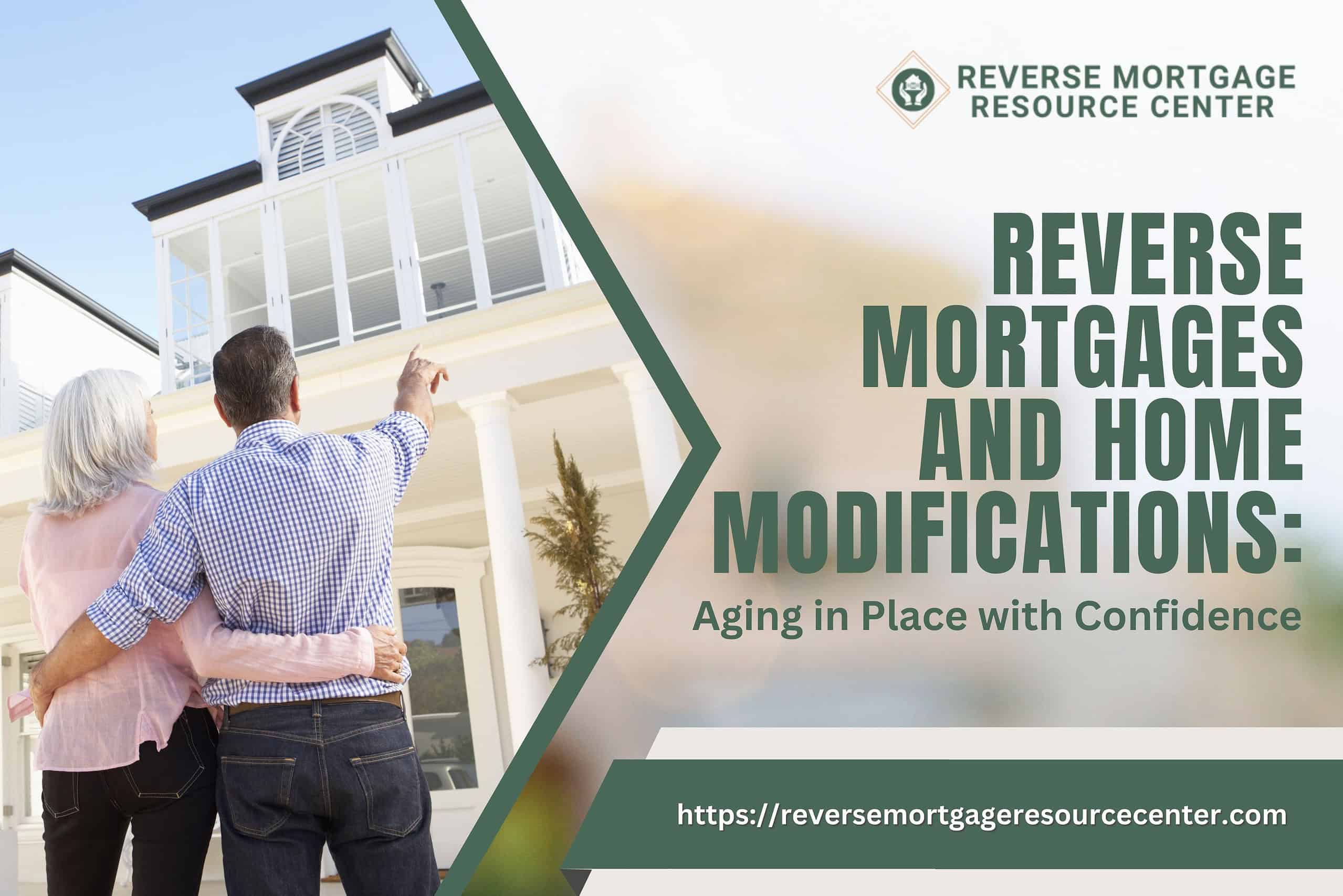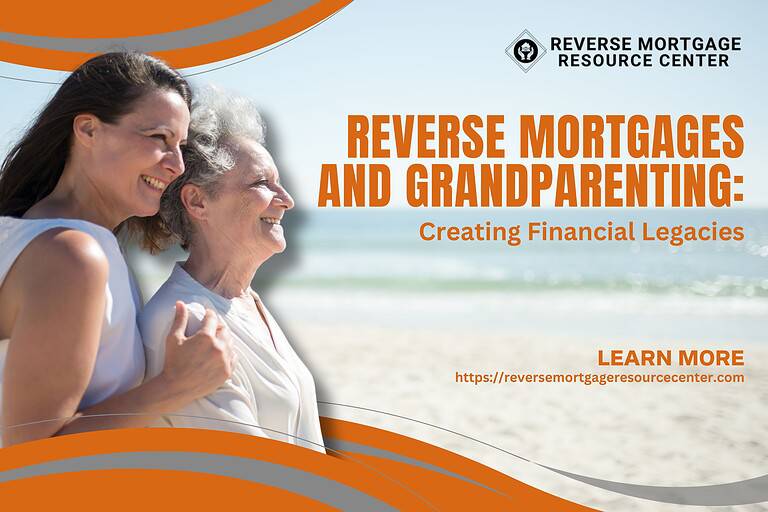Reverse Mortgages and Home Modifications: Aging in Place with Confidence
As the golden years approach, many seniors find themselves grappling with financial challenges that can impact their ability to maintain a comfortable and secure living environment. The desire to age in place, surrounded by familiar surroundings, is a common aspiration among older individuals. To achieve this goal, it is essential to explore innovative solutions that seamlessly integrate financial strategies with practical home adjustments. In this article, we will delve into the synergy between reverse mortgages and home modifications, offering expert guidance to empower seniors to navigate their retirement years with confidence.
Understanding Reverse Mortgages
Unlocking Home Equity for Financial Freedom
A reverse mortgage is a financial tool designed to allow seniors to convert a portion of their home equity into readily accessible funds without the need to sell their home or take on additional monthly mortgage payments. Unlike traditional mortgages, reverse mortgages, also known as Home Equity Conversion Mortgages (HECMs), enable homeowners aged 62 and older to receive loan proceeds as a lump sum, monthly disbursements, a line of credit, or a combination of these options.
The primary advantage of a reverse mortgage is that it provides seniors access to a reliable source of funds while allowing them to continue residing in their homes. This financial solution can be particularly beneficial for individuals facing financial challenges in retirement, offering a means to supplement retirement income, cover healthcare expenses, or address unexpected costs.
The Role of Home Modifications
Creating a Safe and Comfortable Living Environment
While financial stability is crucial, the physical aspects of aging should not be overlooked. Home modifications play a pivotal role in enhancing the safety and comfort of living spaces for seniors. These modifications can range from simple adjustments to comprehensive renovations, all aimed at creating an environment that supports independent living.
Common home modifications include installing grab bars in bathrooms, widening doorways for wheelchair accessibility, and installing non-slip flooring. Additionally, lever-style door handles, improved lighting, and strategically placed handrails can significantly contribute to a safer living space for seniors.
Synergizing Reverse Mortgages and Home Modifications
A Holistic Approach to Aging in Place
The true power of aging in place with confidence lies in the synergy between reverse mortgages and home modifications. By combining these two elements, seniors can create a comprehensive strategy that addresses both their financial needs and physical well-being.
Financial Flexibility for Home Modifications
Reverse mortgages can provide the financial flexibility needed to fund home modifications. Whether it’s adding ramps for wheelchair access or renovating bathrooms for increased safety, the funds from a reverse mortgage can be strategically allocated to enhance the home’s functionality and accessibility.
Tailoring Home Modifications to Individual Needs
Every senior has unique requirements, and home modifications should be tailored to address individual needs. A reverse mortgage allows for a personalized approach, empowering seniors to make modifications that suit their lifestyle and preferences. This could include installing smart home technology for added convenience or creating a more age-friendly kitchen space.
Professional Guidance for a Seamless Integration
Achieving a harmonious integration between reverse mortgages and home modifications requires expert guidance. Seniors should consult with financial advisors, reverse mortgage specialists, and professionals in home modification to ensure a comprehensive and well-executed plan. This collaborative effort can result in a tailored strategy that aligns with both financial and physical objectives.
The Importance of Financial Planning in Retirement
Navigating the Financial Landscape
Seniors facing financial challenges in retirement often grapple with uncertainties related to healthcare costs, living expenses, and potential emergencies. As individuals age, the need for access to a reliable and steady source of funds becomes paramount. This is where reverse mortgages step in, offering a lifeline that allows seniors to tap into the wealth they have accumulated in their homes.
Financial planning in retirement involves a careful assessment of income sources, expenses, and potential risks. Reverse mortgages provide a unique avenue for financial planning, offering a way to supplement existing income streams or address unexpected financial burdens. By incorporating a reverse mortgage into their financial strategy, seniors can enhance their financial resilience and create a more predictable financial future.
The Adaptive Nature of Home Modifications
Meeting Evolving Needs
Aging is a dynamic process, and the needs of seniors evolve over time. Home modifications should not be seen as a one-time endeavor but as an ongoing process that adapts to the changing requirements of individuals. This adaptability is crucial in ensuring that living spaces remain safe and comfortable as seniors progress through different stages of aging.
For example, an initially simple modification, such as adding grab bars in bathrooms, can be complemented by more extensive changes like installing walk-in tubs or showers as mobility decreases. Home modification specialists can work with seniors to create a dynamic plan that considers both immediate and future needs, fostering a living environment that evolves in tandem with the aging process.
Maximizing the Potential of Reverse Mortgages
Strategic Use of Home Equity
Seniors considering reverse mortgages should approach this financial tool with a strategic mindset. While the funds obtained through a reverse mortgage can be used for various purposes, including home modifications, it’s essential to prioritize needs and allocate resources thoughtfully.
For instance, using reverse mortgage proceeds to address critical safety concerns, such as adding ramps or stairlifts, may take precedence over cosmetic renovations. Working with financial advisors and home modification experts can help seniors create a prioritized plan that maximizes the potential of reverse mortgages, ensuring that funds are allocated where they are needed most.
The Emotional Impact of Aging in Place
Preserving Independence and Well-being
Aging in place is not just about physical safety and financial security; it also has a profound impact on the emotional well-being of seniors. The familiarity of one’s home, the sense of community, and the preservation of independence contribute significantly to a higher quality of life in the later years.
Home modifications play a crucial role in preserving this emotional well-being. By creating an environment that accommodates changing physical abilities, seniors can maintain a sense of autonomy and control over their lives. The emotional benefits of aging in place extend beyond the individual, positively impacting family members and caregivers who share in the journey. The emotional impact of aging in place extends to a sense of belonging, continuity, and the cherished memories embedded within the walls of a familiar home.
Fostering a Sense of Community
Aging in place not only allows seniors to remain in their homes but also enables them to stay connected with their local communities. The relationships built over the years, the familiar faces at the local grocery store, and the bonds formed with neighbors contribute to a strong sense of community. Home modifications can further support this sense of community by ensuring that seniors can easily navigate and participate in social activities.
For instance, wheelchair ramps or accessible pathways in the backyard can facilitate outdoor gatherings, while well-lit and thoughtfully designed spaces encourage family and friends to visit comfortably. By integrating these considerations into the home modification plan, seniors can continue to enjoy the social connections that enhance their overall well-being.
Supporting Caregivers and Loved Ones
The emotional impact of aging in place is not limited to seniors alone; it also extends to the support network surrounding them. Family members, friends, and caregivers share in the satisfaction of knowing their loved ones are comfortable, safe, and able to maintain their independence. Home modifications, such as installing assistive technologies or creating accessible spaces, alleviate the concerns of caregivers and family members, fostering a supportive environment for everyone involved.
REVERSE MORTGAGE RESOURCE CENTER ~LIVE LIFE ON YOUR TERMS~
Our Lending Team has been serving our clients since 2004. We are passionate about serving our clients with integrity to help them achieve their financial goals.







